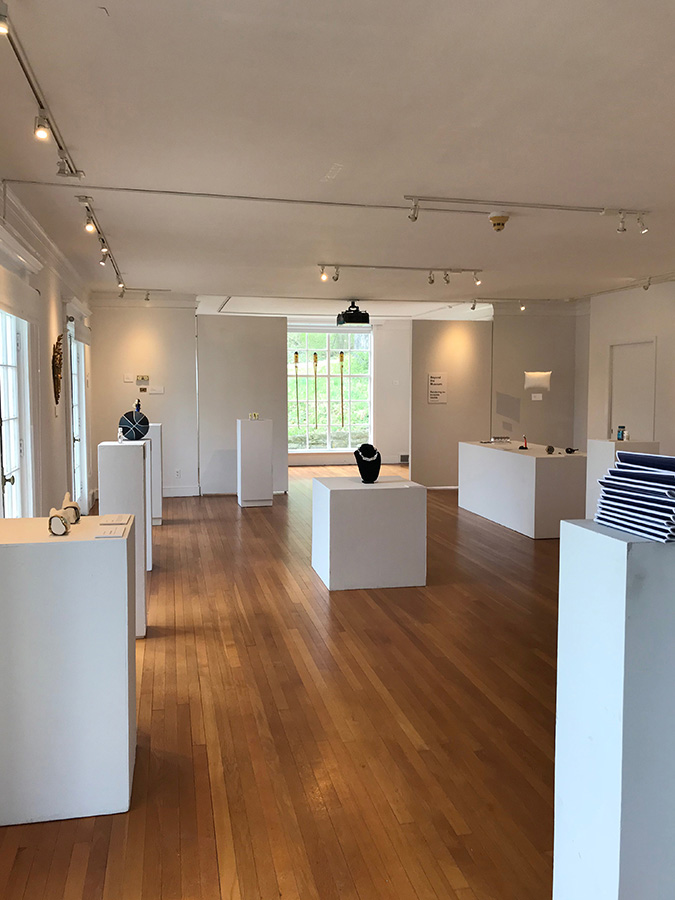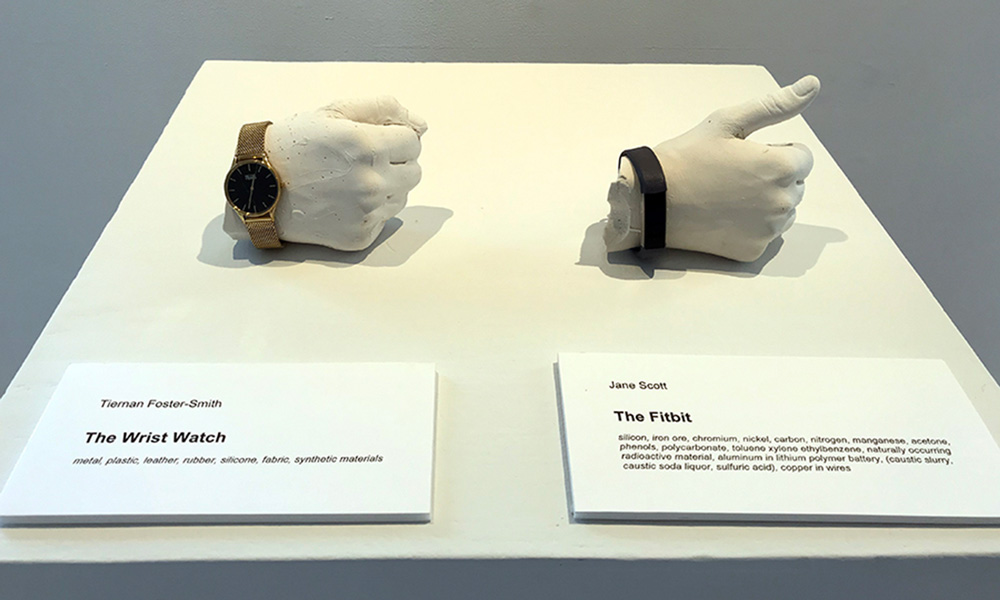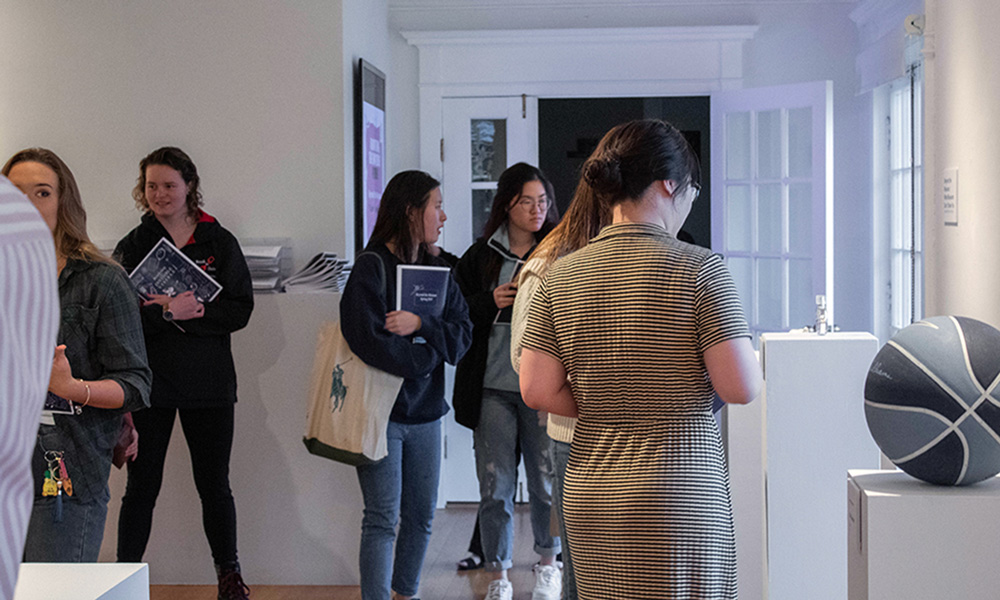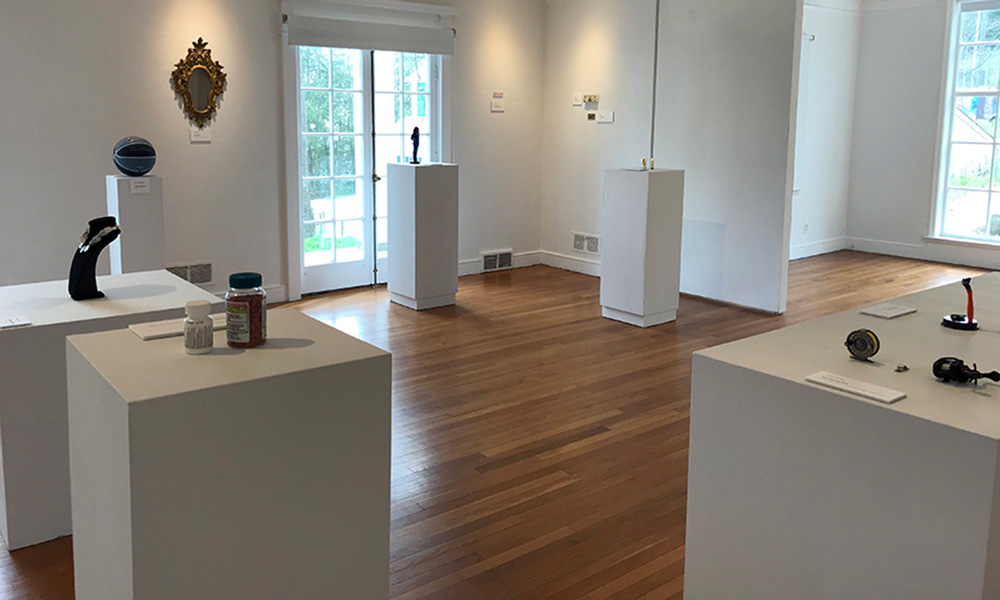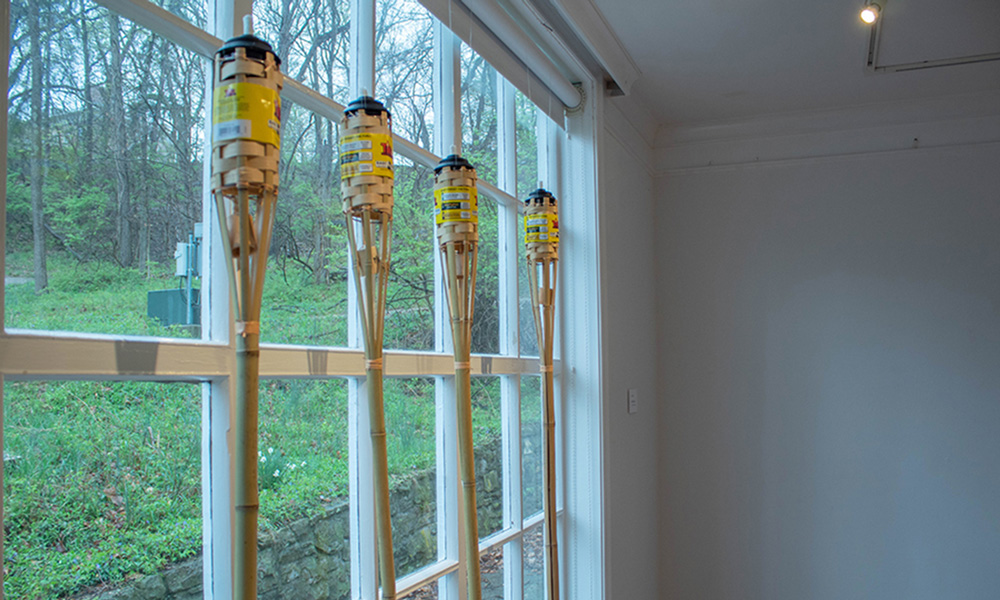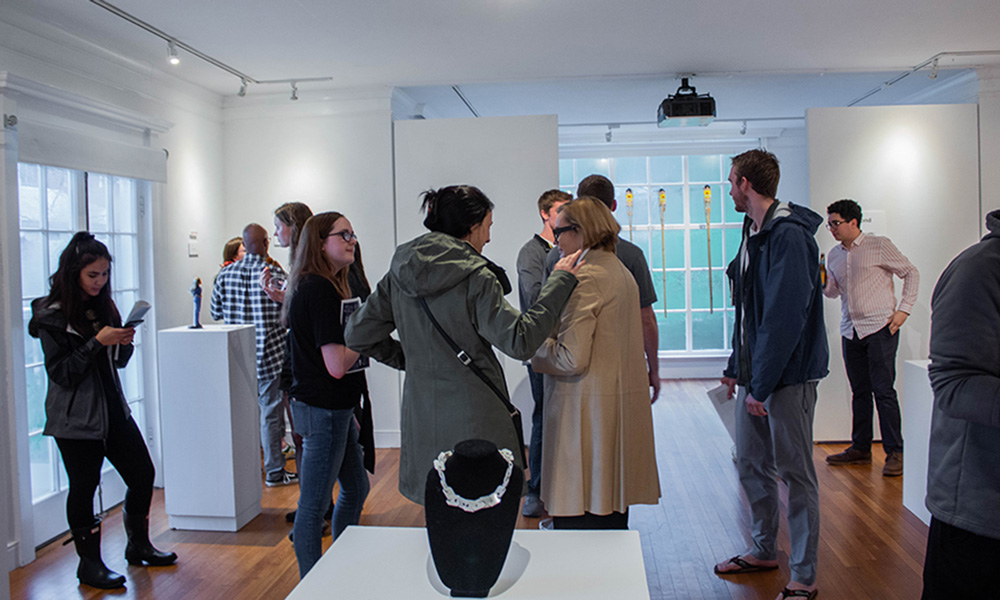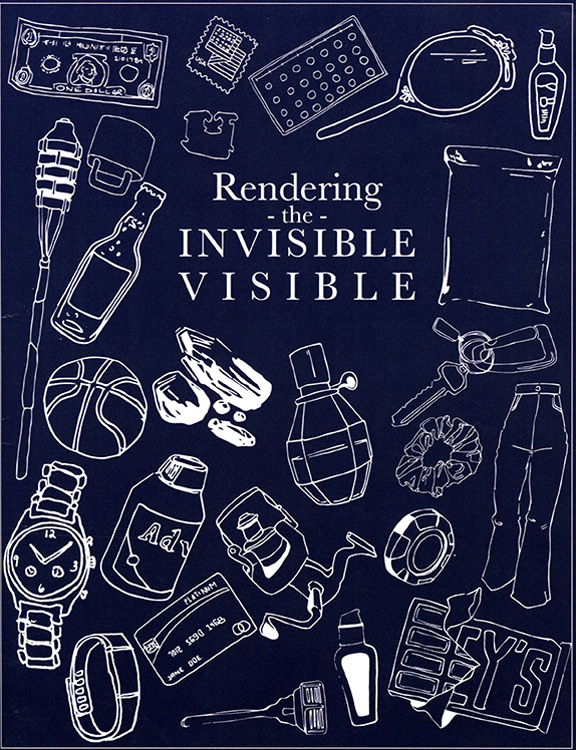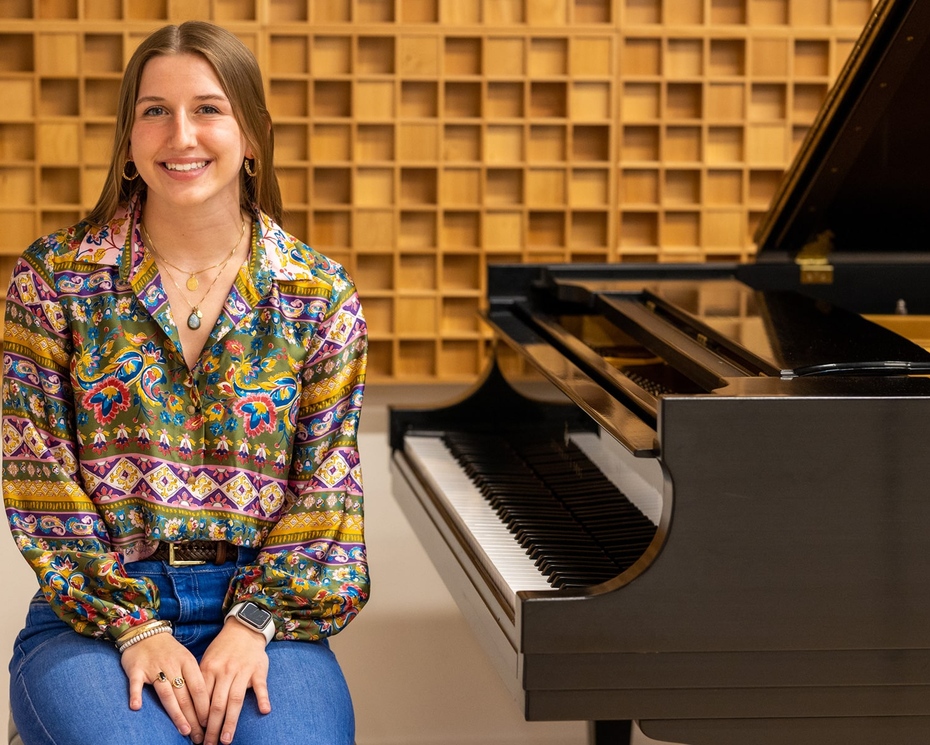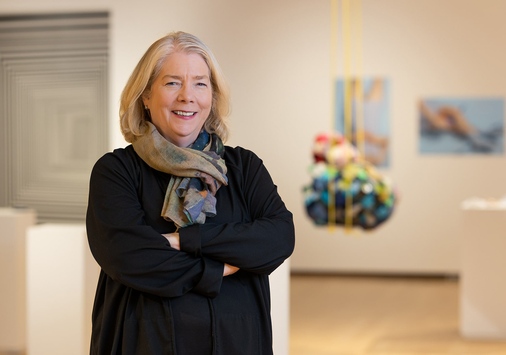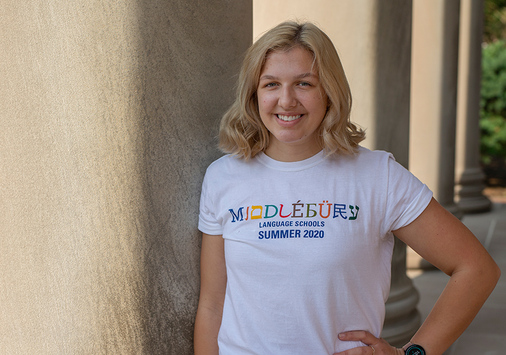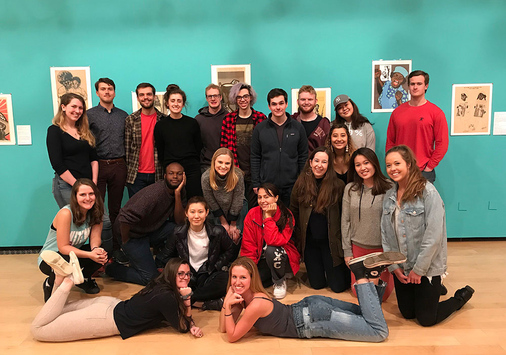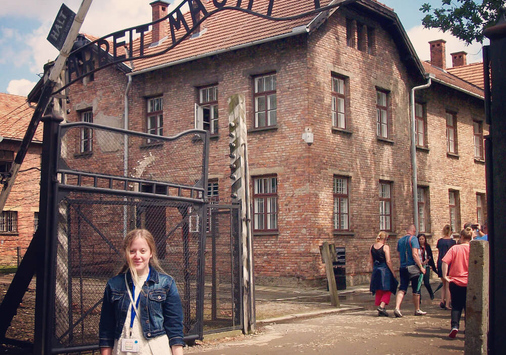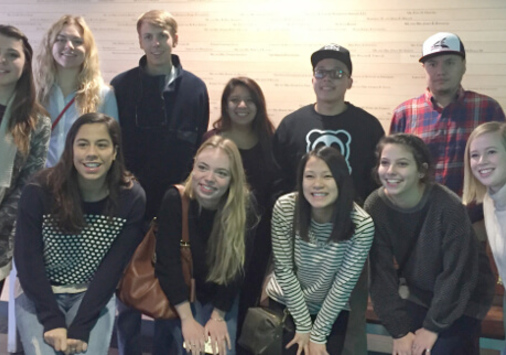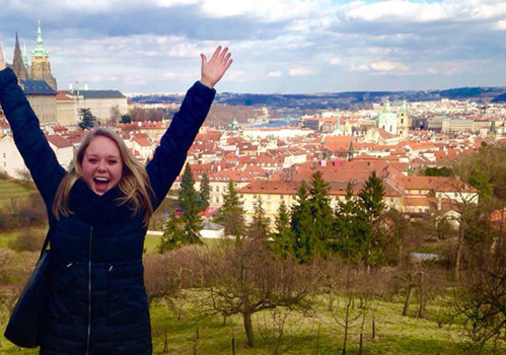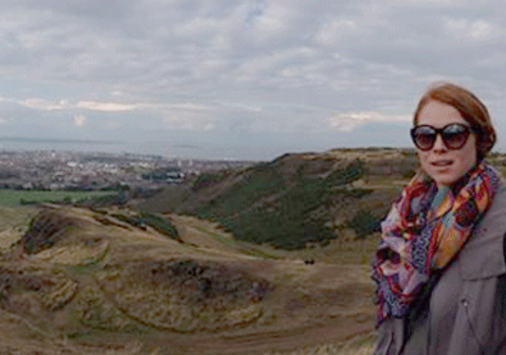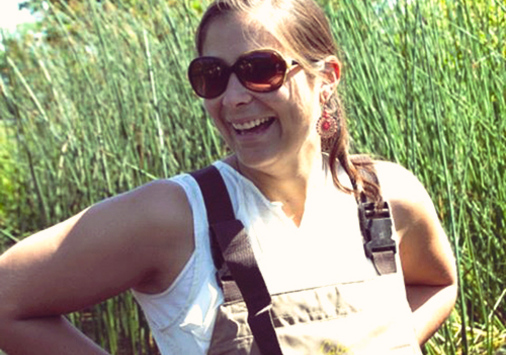This exhibition and catalogue is the result of a Denison University class entitled Beyond the Museum: Exhibition Culture Today, in which students study the history and theory of museum culture. But rather than simply studying museum structure, organization, strategies, tasks, and skills, the class began by asking fundamental questions about why museums exist, how they are supported, to whom do they feel obligated, who do they really serve, who is really invited in to them (especially behind the scenes), and who feels welcomed by museums and who does not? The class went on to ask even more fundamental questions: how do global museum structures conform to historically “western” epistemologies, intellectual structures, taxonomies, and imaginaries; and do the same museums elide the epistemologies and imaginaries of the “othered” world by doing so? This led to discussions of ways in which some images, objects, and even peoples, have been rendered invisible by-and-to museums, and how museums are poorer for their loss.
This exhibition is noteworthy because none of the objects in it is “museum-worthy” in the traditional museum sense. Each is an object so ordinary that it is rendered invisible by being so commonplace—we don’t notice the things in this exhibition when we see them because we tend to see them on a daily basis—and they certainly would not normally merit display in a traditional museum.
This exhibition intends to subvert, invert, and interrupt the normal museum narrative and render the normally invisible, visible. In many ways this exhibition is a metaphor for many other invisibilities. In other ways it is not. All of the objects in this exhibition are manufactured objects and thus have been heavily marketed. They are everyday objects precisely because they have been successfully promoted by advertising agencies to mainstream consumers. So, in that way they are invisible by choice not through marginalization. The difference is critical.
The narrative of this exhibition is one of a group of students at Denison University in the spring of 2019: they chose the objects. These are the things they found interesting enough to explore but common enough not to notice. As a collection of stories, this exhibition tells an interesting tale: these students are critically aware of environmental issues; they care deeply about one another; they talk about gender, race, social justice, and equal treatment; and they are generous-hearted, kind, funny, clever, and most of all deeply committed young people. Before I finish I must say that it has been an honor and privilege working with each and every one of the students in this class. We set out to create an exhibition from the ground up: the students divided themselves into committees responsible for collecting the objects; designing, planning, and distributing publicity; photographing the objects for the catalogue; designing and doing all the layout for the catalogue; writing their individual catalogue essays, then teams edited, re-edited, and re-edited the essays; wrote and made the wall labels; painted pedestals; installed the exhibition; organized the reception; did the final layout for this catalogue and had it printed; and they did much, much more! They did all of this with the minimum of supervision. I cannot say enough about this class. They have been amazing. Any one of them could take on museum work tomorrow. Thank you, all of you for a great semester.

